The Library Before Central

The Library traces its history to 1865, when Ira Divoll, superintendent of the St. Louis Public Schools, established a subscription library - the Public School Library and Lyceum – in the Darby Building at 5th and Olive streets. Divoll intended the Library to act as a supplement to public education and as a means of self-education and culture: a library designed "for the whole people, like the schools themselves."
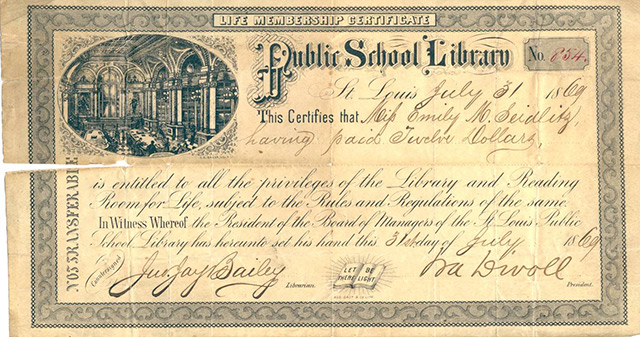
A subscription library meant that the public was required to pay a fee to use the Library. This early certificate – you might think of it as an early library card - was signed by Ira Divoll himself and certifies that Miss Emily Seidlitz has paid $12 and is entitled to use the new Public School Library for life.
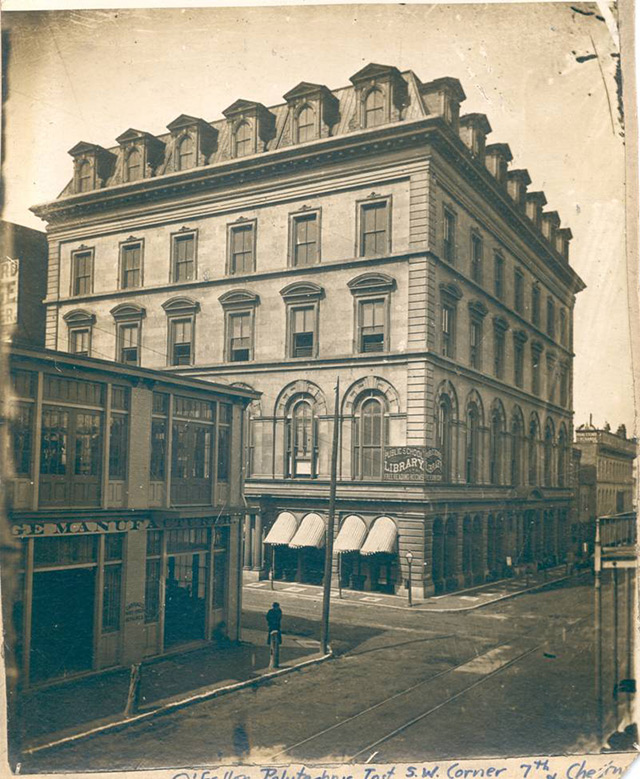
In 1869, operation of the Library was transferred from the private Library Society to the Board of Education, and moved to the Polytechnic Building at 7th and Chestnut. In 1874 it was opened to the general public for reading and reference use on the premises. A staff of four offered reference services 12 hours a day and published an index of its holdings. Unlike many other public libraries of the time, there were no age restrictions and children were encouraged to visit.
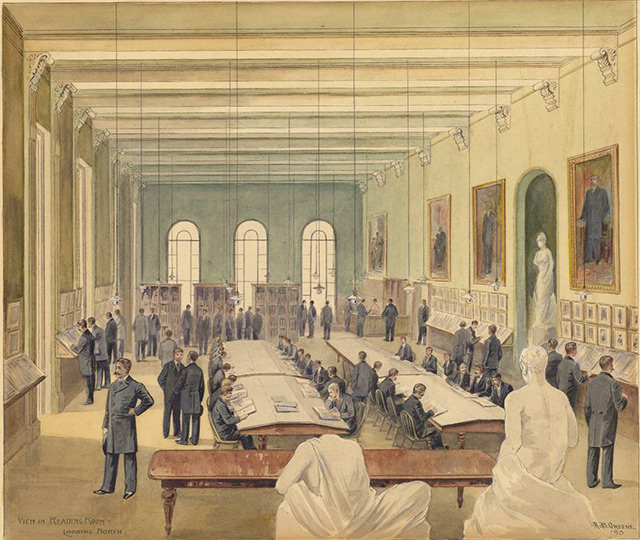
Growth was rapid. From a collection of 1500 volumes in 1865, it expanded to 90,000 volumes by 1893, requiring new space.

In 1893, the library moved into new quarters on the top floors of the new Board of Education building at Locust and Ninth Streets. The same year the citizens of St. Louis voted - 36,235 for, 6,188 against - to move the administration of the Library to an independent board, supported by a property tax. With this vote, the St. Louis Public Library as we know it today was created – free of subscription fees and open to all St. Louis residents. The Board of Education building looks virtually the same today, and has been converted to lofts. Residents live in the original library space on the two top floors.
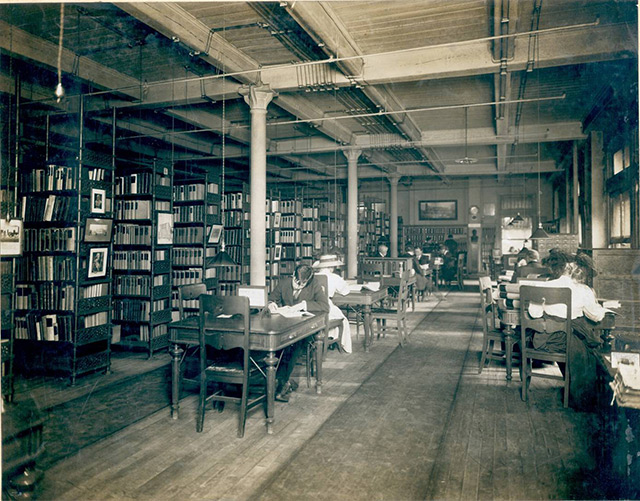
The Library occupied this space from 1893 until 1909, as work on Central Library was underway. It was inadequate almost from the start. During this period, the Library began its role as a lending library, allowing the public to ‘check out’ and take books home. Newspapers and magazines were enormously popular and could generally be used only in the Library. The original lease for this space between the Library and the Board of Education is still in the Library’s collection: two floors cost $7500 per year, and, among other things, required that an elevator operator and boiler stoker be on duty during public hours six days a week.
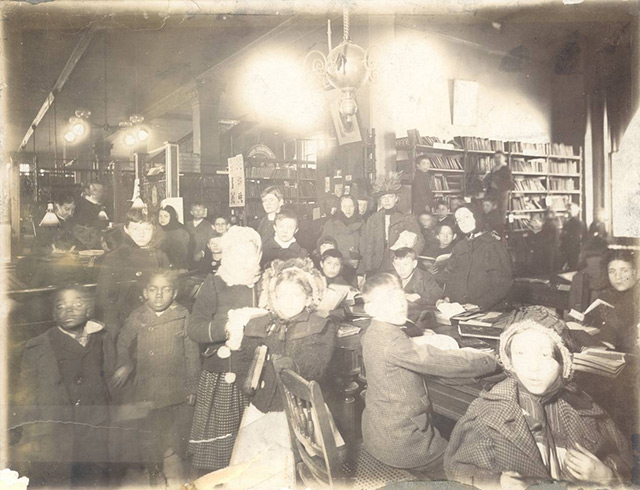
Perhaps because of its association with the public schools, or because of St. Louis’ long history of innovative programs for its youth, the St. Louis Public Library welcomed and served children from its first years. A dedicated Children’s Room opened in 1897. The tradition of imaginative service and outreach to children continues in our libraries today. Other new library services debuted during this period of burgeoning use. The first St. Louis Public Library branch opened on Broadway in Carondelet in 1883.

Many aspects of the early library haven’t changed at all in over a century: here a patron browses the new books in the travel section in 1898.

The popularity and heavy usage of the public library meant that the new board of directors began looking almost immediately for a means of building a dedicated library building. One man made it happen.